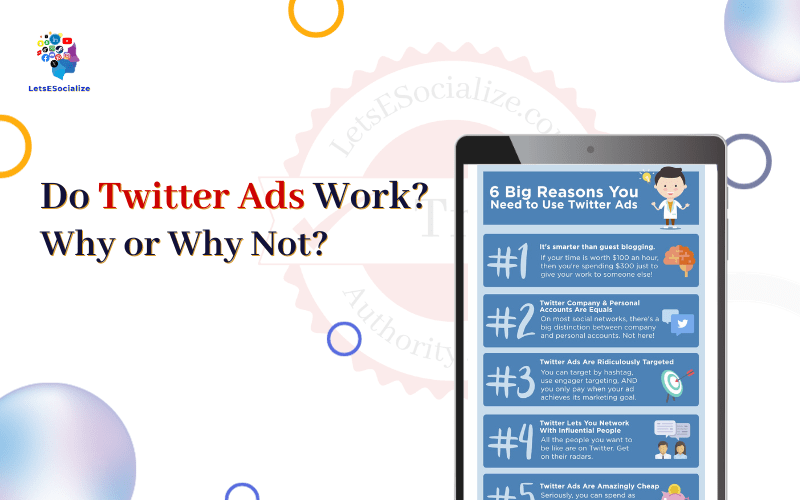With over 300 million monthly active users, Twitter offers an immense potential audience for brands looking to expand awareness and drive engagement. However, debate persists over how effectively promoted ads on Twitter actually deliver results.
In this comprehensive guide, we’ll dive into the reasons some experts believe Twitter ads don’t work, as well as the counter-arguments for why Twitter ads can, in fact, succeed. You’ll also gain actionable best practices to implement based on an analysis of real-world Twitter ad performance data and case studies.
By the end, you’ll have a conclusive answer about if and how Twitter ads can work as part of your social media marketing mix.
Table of Contents
The Case Against Twitter Ads Working
There are a few common criticisms leveraged against Twitter ads that lead some marketers to believe they are ineffective:
Low Engagement Rates
Twitter’s engagement rate of around 0.05% is lower than other platforms like Facebook and Instagram. Some advertisers see poor value without sufficient actions.
Minimal Placement Targeting
Twitter offers less ad positioning control compared to sites like Google and YouTube. Advertisers need more options to ensure visibility.
Difficulty Targeting Users
Targeting functionalities around demographics, interests, and behaviors is seen as less robust and accessible on Twitter.
Cluttered Environment
The busy Twitter feed makes it easy for Promoted Tweets to get lost without sufficient reach or frequency optimization.
High Competition
Top brands flood Twitter with ads, making it easier for smaller brands to get through with large budgets.
Poor Attribution
Twitter is seen as more of an “awareness” platform with an indirect impact on sales. Directly attributing ROI is viewed as challenging.
While these factors can present advertising obstacles, there are strategies to overcome each one when executed effectively.
The Case For Twitter Ads Working
There is also strong evidence indicating Twitter ads can deliver significant results:
Highly Engaged Users
While the overall site engagement rate is low, Twitter has a niche of highly vocal power users who engage deeply when content resonates.
Audience Insights
Twitter provides rich audience interest, conversation, and follower demographic data to target ads effectively.
Mobile Optimization
The majority of Twitter users are on mobile, allowing ads to connect on-the-go conveniently.
Real-Time Conversation
Twitter offers opportunities to intercept audiences around timely events, news, and trends.
Lead Generation
Direct response ads like conversation cards make it simple to collect contacts, sign-ups, installs, and more.
Brand Building
Twitter drives awareness and perception through promoted trends, videos, tweets, and influencer engagement.
The truth is that, like any platform, success comes down to the quality of creativity, targeting, analysis, and optimization. Executed strategically, Twitter ads can deliver outstanding results.
Also read: Case studies of successful Twitter Ads
Do Twitter Ads Work? The Verdict
The verdict is yes – Twitter ads absolutely can work and generate impressive ROI, but only with the right strategy and execution.
Here is a recap of factors that determine success or failure:
They Work When…
- Strong creative optimized for the platform
- Laser-focused audience targeting
- Direct response optimization
- Real-time trend leveraging
- Engaging with influencers
- Monitoring performance continuously
They Fail When…
- Weak creative and branding
- Broad untargeted ads
- No clear ROI goals
- Spray and pray approach
- Budgets spread too thin
- Poor account foundation
With the blueprint provided in this guide, brands willing to take the time to test and refine Twitter ads tailored to their objectives can tap into Twitter’s immense value.
Also read: What Kind of Advertising Works Best on Twitter?
Best Practices for Successful Twitter Ads
Here are proven best practices to optimize Twitter ads for maximum results:
Strong Visuals
Leverage bold images, videos, GIFs, and graphics that grab attention in the feed. Avoid text-only ads.
Concise Copy
Write short, scannable ad copy using emojis, questions, and calls to action. Long blocks of text need to be fixed.
Hashtag and @Mention Targeting
Targeting branded or industry-relevant hashtags and influencer handles reaches engaged audiences.
Location and Event Targeting
Geo-targeting around locations or timing ads around tentpole events boosts visibility.
Audience Look-Alike Targeting
Using client lists or known high-value followers for targeting expands reach.
Website Retargeting
Remarketing website visitors helps convert audiences already aware of your brand.
Instant Mobile Lead Gen
Leverage cards to secure email sign-ups, app downloads, purchases and more directly from ads.
Conversion Tracking
Utilize conversion pixels and UTM parameters to accurately measure Twitter ad ROI.
Making Twitter ads work requires going all in on the platform’s unique capabilities. Proper execution trumps any inherent limitations.
Twitter Ad Campaign Success Stories
Here are real-world examples of brands running effective Twitter ad campaigns:
Microsoft’s Xbox – Drove 13% Lift in Ad Recall for Game Pass
Microsoft achieved strong branding results with a 13% increase in ad recall by targeting gamers 18-35 using short 6-second video ads on Twitter.
Wendy’s – 4.5% Engagement for National Cheeseburger Day Promotion
Wendy’s leaned into a timely cultural moment – National Cheeseburger Day – asking followers to tweet their favourite toppings. Their Promoted Tweet tied to the trending topic hit a 4.5% engagement rate.
RXBAR – 55% Higher Conversion Rates with Lead Gen Cards
Protein bar brand RXBAR used Twitter Conversation Cards to convert website visitors into email subscribers, collecting contacts and offering discounts. Their conversion rates exceeded other platforms by 55%.
Adobe – 500 Million Impressions with Promoted Trends
Adobe amplified its creative software launches by sponsoring Promoted Trends for relevant #Adobe and #Create hashtags, generating over 500 million potential impressions.
With strategies tailored for each brand and campaign, Twitter delivered impressive performance and ROI across these examples.
Step-by-Step Guide to Twitter Ad Success
Follow this step-by-step blueprint to ensure your Twitter ads are set up for maximum impact:
Step 1) Set clear campaign objectives and targets tied to business goals.
Step 2) Research competitors and influencers on Twitter to identify positioning.
Step 3) Design multiple ad variations, including visuals optimized for the platform.
Step 4) Use tight targeting parameters like interests, locations, or past converters.
Step 5) Start with a small daily budget to test results before scaling.
Step 6) Track engagement, clicks, and sales and calculate ROAS.
Step 7) Kill underperforming ads quickly while expanding winners.
With the right strategic approach, Twitter ads can become a high-ROI channel in your marketing mix. But it requires moving beyond the platform’s perceived limitations to unlock its unique value.
Also read: The Complete Guide to Twitter Ads Manager
Frequently Asked Questions
-
Can any business succeed with Twitter ads?
The brands that tend to see the most success and have an existing organic presence on Twitter are leveraging trends and real-time conversation or promoting highly visual content or direct-response offerings. More awareness-focused brands can still generate results but may require larger budgets.
-
What budget do you need for Twitter ads?
One of the benefits of Twitter ads is the relatively low barrier to entry. Campaigns can be tested for as little as $10 a day initially. $100 per day allows for more significant testing and optimization. Most brands see success in dedicating $500 to $1000 per month to Twitter ads.
-
How quickly can you see Twitter ad results?
The real-time nature of Twitter means you can analyze performance data almost immediately after launching ads. Metrics like clicks, engagements, impressions, and video views can be assessed continuously to spot winners and losers. Sales and leads require proper conversion tracking.
-
What’s more important – ad creative or targeting on Twitter?
Strong ad creative that catches the eye and draws users in is critical for success on Twitter. But precisely targeting and retargeting engaged audiences and look-alikes can give your content the optimal audience to convert. You need both working together.
Conclusion
There is a loud minority of marketers who dismiss Twitter ads as ineffective, given the platform’s unique environment. However, real-world campaign data shows that with the proper strategy tailored to objectives, informed targeting, strong creativity, and relentless optimization, brands can absolutely extract substantial ROI from Twitter ads.
Success requires moving beyond perceived limitations to tap into the platform’s true advertising potential. Brands willing to do the work to test and refine approaches will reap the benefits of Twitter’s immense reach and vocal user base. The verdict is clear – Twitter ads work and warrant consideration in your marketing mix.







